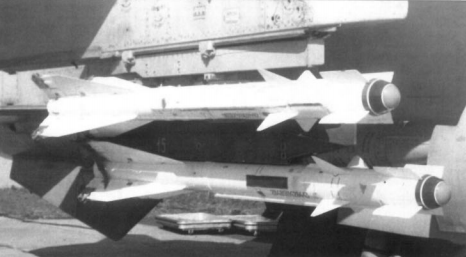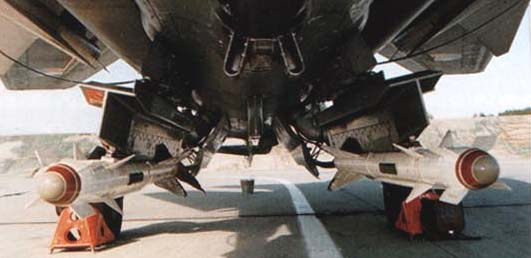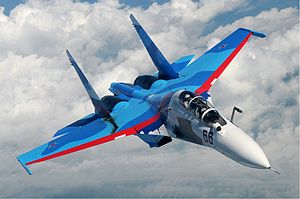Blitzer9856
ACCESS: Restricted
- Joined
- 13 August 2019
- Messages
- 48
- Reaction score
- 66

Hi everyone, as I'm not aware of any thread on this topic, here I'd like to create a thread on the R-60 AAM, famous for being the first dogfight missile to enter service.
I know there were "sub-variants" of it so I'd like to share.
First here is some background on its development and context as to why it was developed (my own personal writing);
With the Vietnam War in full swing, the capabilities of the new aerial weapons were finally tested. Both the US and USSR were diving into the missile age and expecting future aircraft to become missile-only carriers. This was testified by several aircraft such as the F-102, F-101B, early versions of the F-4 Phantom, the Su-9, Su-11, Yak-28P, MiG-21PF and more.
Their vision was soon shattered, with the true face of early missiles shown in actual combat. In particular, the performance of the AIM-9B and R-3S (part of the K-13 missile family) was poor, that their seekers could not fire off-boresight such as later missiles, had poor seeker angular tracking (their seekers were slow and could not keep up with maneuvering targets), poor control surfaces and could often suffer failure and not launch at all.
These missiles were characterized by 12g of maneuverability, up to 10°/s of seeker tracking and limited lock-on ranges of just 2 km (1.2 mi) at sea level from the rear. And yes, they weren't all-aspect, not even side-aspect. They also were not cooled, did not have off-boresight capabilities, and pilots were instructed to fire them at targets pulling no more than 3g. For this reason, the effective range was only 1 km (0.6 mi) in practice; to catch bogies off guard by firing such missiles at short distances so they could not react. Importantly, the firing conditions also had to include the fact that the targeted enemies had to be flying straight, as the missiles could not fire off boresight. Though, their seekers had a view of 4.0°, which was decent.
Obviously, this had to be redeemed quickly. Even Sparrows were proving to be nearly useless - the F-4's radar suffered from ground interferance, and even in so-called "perfect" conditions, the Sparrow could still suffer from tracking issues. Sometimes, its rocket motor did not even ignite, and upon launch it would just fall vertically to the ground.
Both nations were quick to develop new solutions. The US came with the AIM-9D shortly after the outbreak of the war; a USN Sidewinder with increased maneuverability, a more efficient seeker and a rocket motor with more burn time.
The new Sidewinder developed by the Navy had increased maneuverability from 12g to 18g, from 10°/s of tracking to 12°/s, and a new Hercules Mk 36 rocket motor with 5 seconds of burn which replaced the Thiokol Mk 17 with only 2.2 seconds of burn, though it had less thrust (1,306 kgf/2,880 lbf vs 1,732 kgf/3,820 lbf).
Slightly larger fins and an improved Mk 48 warhead were also introduced. The new lock-on range was 18 km (11 mi) as well, due to the new nitrogen-cooled seeker (previously the AIM-9 did not have a cooled seeker). However, the FOV was reduced from 4° to 2.5°, and it did not have off-boresight capability.
Derived from the AIM-9D, the AIM-9C was also developed with a semi-active radar-homing seeker to provide all-aspect engagement capability. It wasn't widely used; only the F-8E Crusader could utilize it. Produced from 1965 - 1969.
A more efficient model was derived from the AIM-9D; it was the AIM-9G. Unlike the AIM-9D, it featured off-boresight capability, and a very wide one at that. It was also equipped with the new SEAM technology (Sidewinder Expanded Acquisition Mode), which allowed the optics either to be slewed through a search pattern, or to be slaved to the aircraft's radar to acquire a target. It was produced from 1970 - 1972. The AIM-9D/G were still not good though; they proved to have a 16% kill probability over Vietnam.
At the same time, the USAF developed the AIM-9E, with an electric-cooled seeker head that had off-boresight capability, but with the same rugged maneuverability of the AIM-9B.
While in the USSR, several heat-seekers had already been developed and put into service. The R-8MT, as part of the Su-11's weapon systems, featured 14g of maneuverability, 12°/s of tracking, a PRD-141 rocket motor with a whopping 11,200 kgf (24,691 lbf) of thrust, 2.5 - 6 seconds of burn and a maximum kill range of 14 km (8.7 mi). This was the heat-seeking brethren of the R-8MR.
Later in 1963, they evolved into the R-98R and R-98T. The R-98T was the heat-seeking variant, and the new TGS-14T seeker of the R-98T (which replaced the TGS-14 of the R-8MT) had all-aspect lock-on capability, a feat considering the year of design.
The R-98T and R-98R (later developed into the slightly more modernized R-98MT and R-98MR; the latter being the weapon which shot down the KAL 007 Korean airliner).
In 1969, a new heat-seeker was also introduced. The Kaliningrad R-55, based on the beam-riding RS-2US, was equipped with an advanced IR-homing head. Compared to the K-13A / R-3S, tests have shown that it was nearly twice more effective and had off-boresight capability. It had around 16 - 18g of maneuverability and 12°/s of tracking. This may be compared to the British Red Top missile.
Backing up by two years, the Soviets managed to capture and recover an AIM-9D from an F-4B Phantom that was shot down over the sea. They studied it closely, and began improving on the original K-13A / R-3S. The new rudders were copied, however the seeker head was indigenously developed: in place of the original TGS-13K, the INEY-70 was put, with off-boresight capability unlike the AIM-9D. It was also equipped with a new rocket motor by the designation of DWP-240, producing 6,000 kgf of thrust (13,228 lbf). Estimated maneuverability at 15 - 16g and 12°/s, the seeker could also lock onto targets from 15 km at high altitude (9.3 mi).
In 1970-71, the Soviets managed to capture yet another missile; this time an AIM-9J from a South Korean base. The interesting canard design intrigued them, and a new more efficient INEY-M seeker with 4° of FOV (instead of 2.8°) was developed. The resulting missile was the R-13M1, with an increased maneuverability to around 20g, a launch limit of 6g (unlike 3.7g on the R-13M) and a tracking rate of around 16°/s. However, it was never exported, and was in limited service because the R-60 overshadowed it (see below).
All the effort, while appreciated, still did not provide adequate efficiency to make a complete switch to missiles. Navy and Air Force F-4 Phantoms for example were re-equipped with guns in the shape of gunpods such as the SUU-23/A housing the famous M61A1 20mm Vulcan gattling cannon.
Recognizing the need for effective short-range AAMs, Molniya (now merged with Vympel) began developing a new air-to-air missile based on the 9M31 Strela MANPADS. Of course, because it was derived from a MANPADS missile, it had to be redesigned to suit air-to-air engagements.
When picking the main technical solutions for the R-60 missile, its developers, who had previously successfully created relatively large medium and long-range missiles R-8(MR/MT), could not ignore the experience of their Vympel colleagues in the K-13 family of missiles, although in the end, the R-60 had a number of fundamental differences from the Vympel missiles.
The designers of the Kiev Arsenal, headed by S.P. Alekseenko, created the uncooled OGS-60TI Komar seeker with a low-inertial gyro stabilizer, which provided target designation angles up to 12° off-boresight. In order to increase the efficiency of aerodynamic control surfaces at high angles of attack, small destabilizers fixed on the outer surface of the hull of the seeker were used to straighten the incoming airflow. The missile was also designed to be extremely light to support dogfight-levels of maneuverability.
The R-60 izdeliye 62 ("product-62") missile was created in an extremely short time. Already in 1971, full-scale testing began - missiles launched from a ground-based launcher were aimed at a tracer installed on a tower. Soon, tests began with the MiG-21, and on December 18, 1973, two years earlier than the French Matra Magic-1, the R-60 was put into service.
The R-60 was a technological marvel for its time. For the first time in history, an air-to-air missile was capable of being launched from 300 m (985 ft) and successfully hit targets consistently every time. The R-60 was a very maneuverable missile; with 35°/s of seeker tracking and up to 30g of maneuverability (some sources will indicate around 42g, but this is the structural load, after which the missile breaks apart).
It could also be slaved to the radar or IRST of the aircraft, provided there is a lock-on from either of them. This feature provided the seeker with the enemy's coordinates, giving the missile a headstart in tracking instead of waiting around a second to find the target and begin tracking. The new OGS-60TI Komar seeker head not only had 12° of off-boresight capability, but also a view of 5°.
Maximum launch limit was 7g, and the missile was advertised to have guaranteed direct contact with an enemy pulling 8g. It could be loaded under either APU-60-1 rails or APU-60-2 double rails (the latter was a single pylon that could hold two R-60s).
An export version with the Kolibri active radar fuse was developed under the designation of R-60K.
In 1975, a better model was developed with the new OGS-75 Komar-M seeker. The new seeker was cooled with nitrogen and provided an off-boresight capability of 17° instead of 12°, as well as turningthe weapon into an all-aspect missile, but it was only sensitive enough to detect incoming frontal targets from 2 km (1.24 mi).
In contrast, the US had the AIM-9J, with 2.5° of FOV, 16.5°/s of tracking and 22g of overload. A version derived from the AIM-9J with similar limited all-aspect capability was the AIM-9P-4.
Only in 1978 did the Sidewinder become truely all-aspect with the introduction of the AIM-9L, with a frontal lock-on range of 3 km at sea level and 8.5 km at high altitude against afterburning targets.
Despite being a 40g missile, the AIM-9L significantly lagged behind in seeker angular tracking at 24°/s. The first true dogfight missile in the US was the AIM-9X, if not the AIM-9L/M.
The second dogfight missile in the world is France's Matra Magic 1, with the same g loads but a tracking of 40°/s.
It is still in service to this day.
And here is the list of the variants and sub-variants we can be aware of:
- R-60 (izdeliye 62): first version. 35°/s of seeker tracking, 30g of overload/maneuverability, 5° of FOV, 12° of off-boresight and a minimum launch range of 300 m (985 ft). Maximum body overload was 47g (overload before breaking apart). Equipped with a PRD-259 rocket motor with variable thrust and up to 5 seconds of burn. Entered service on the 13th of December, 1973.
- R-60K (izdeliye 62): designed for both the USSR and export. Has a new Kolibri active radar fuse which increased the lethality of the missile, instead of the previous "Strizh".
- R-60M (izdeliye 62): new OGS-75 Komar-M seeker which replaced the OGS-60TI Komar. 17° of off-boresight instead of 12°, a nitrogen-cooled seeker which slightly increased lock range, an all-aspect range of 2 km (1.24 mi) and more efficient fuel. The heavier weight was probably the culprit of reducing the maximum body overload from 47g --> 42g. Operational in 1977 or 1978 (some sources contradict).
- R-60M (izdeliye 62P): developed for the MiG-25PD; since the MiG-25 would always have to fly at extremely high speeds, a sub-version of the R-60M was developed for it with a seeker-head provided with protection by a cap made from heat-resistant glass.
- R-60M (izdeliye 62M): has a built-in optical fuse and the central heating cone increased from 17 to 25 degrees celsius (from 62 F° to 77°). A more compact autopilot with a pulsed radio beacon at the carrier's radar frequency was installed. (passive radio fuse?). The Hummingbird radio fuse was also removed from the rocket. PAD and turboelectric generator are installed between the steering unit and the autopilot. In the released volume - 4 liters. a supporting motor is installed. (time of work 4.4 sec.).
- R-60M (izdeliye 63): no known data, possibly a version that was to improve on the original but remained a prototype.
- R-60M (izdeliye 63M): The seeker was replaced with a new bispectral one with an increased capture range (nothing else is known here), the analog autopilot was replaced with a digital one, an induction fuse from MANPADs was installed as well overdrive mode entered for the rocket motor. Adopted in 1985.
- R-60M (izdeliye 63P): similar to the R-60 izdeliye 62P, developed for the MiG-25PD, MiG-31 and MiG-31B.
- R-60M (zdeliye 63R): based on the R-60M izdeliye 63M: it has a guidance system from the Su-24M radar using the 3-point method and the capture of the seeker on the trajectory.
- R-60M (izdeliye 63V): based on the R-60M izdeliye 63M, but with an Ataka radio receiver.

I used these sources:
Soviet/Russian Aircraft Weapons Since WW2 (Y. Gordon)
Mikoyan-Gurevich MiG-29: Famous Russian Aircraft (Y. Gordon) (contains useful info on the R-60/R-60M in the weaponry section)
Р-60 / Р-60М - AA-8 APHID | MilitaryRussia.Ru — отечественная военная техника (после 1945г.)
Сборник справочной информации по отечественным системам вооружений выпуска после 1945 г., форум

Модификации Р-60 [Форумы Balancer.Ru]
Недавно наткнулся на интересную статью про Р-60. godsarrow // skyfireavia.narod.ru ( нормально вставить ссылку у меня не получилось ). Это правда, что имеются модификации Р-60 с радиокомандным…
forums.airbase.ru
